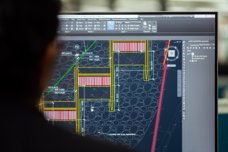Course image by kjpargete on Freepik
ClimateSERV offers users access to historical and forecasted data for meteorological variables such as precipitation, temperature, as well as biophysical variables like soil moisture, evaporative stress index, and the normalized difference vegetation index.
Users can download, analyze, and visualize these datasets – which are available on a global scale – in two different ways:
- The first, and most convenient way to interact with ClimateSERV data is the Graphical User Interface, which is just a fancy way to say the ClimateSERV website.
- The second way to interact with ClimateSERV data – which may be of more interest to users seeking to automate data requests from ClimateSERV – is the Application Programming Interface, or API. The ClimateSERV API allows users to implement the functionality of the ClimateSERV GUI using programming so that our end users can integrate ClimateSERV data into their existing scripts.
In this course we will learn how to use both the ClimateSERV GUI and the ClimateSERVpy API to write Python code to request data from ClimateSERV.
Learning outcomes
After this course, you will be able to:
- Recall what datasets are available in ClimateSERV
- Use the ClimateSERV Graphical User Interface (GUI) via the ClimateSERV website to visualize, download, and analyze how biophysical and meteorological data vary both spatially and temporally
- Use the ClimateSERVpy Application Programming Interface (API) in a Python environment to request and visualize both tabular and raster data from ClimateSERV
Course content
This course is asynchronous, but we estimate that it will take about 7 hours of study to complete. The course is broken down into four units as shown below.






